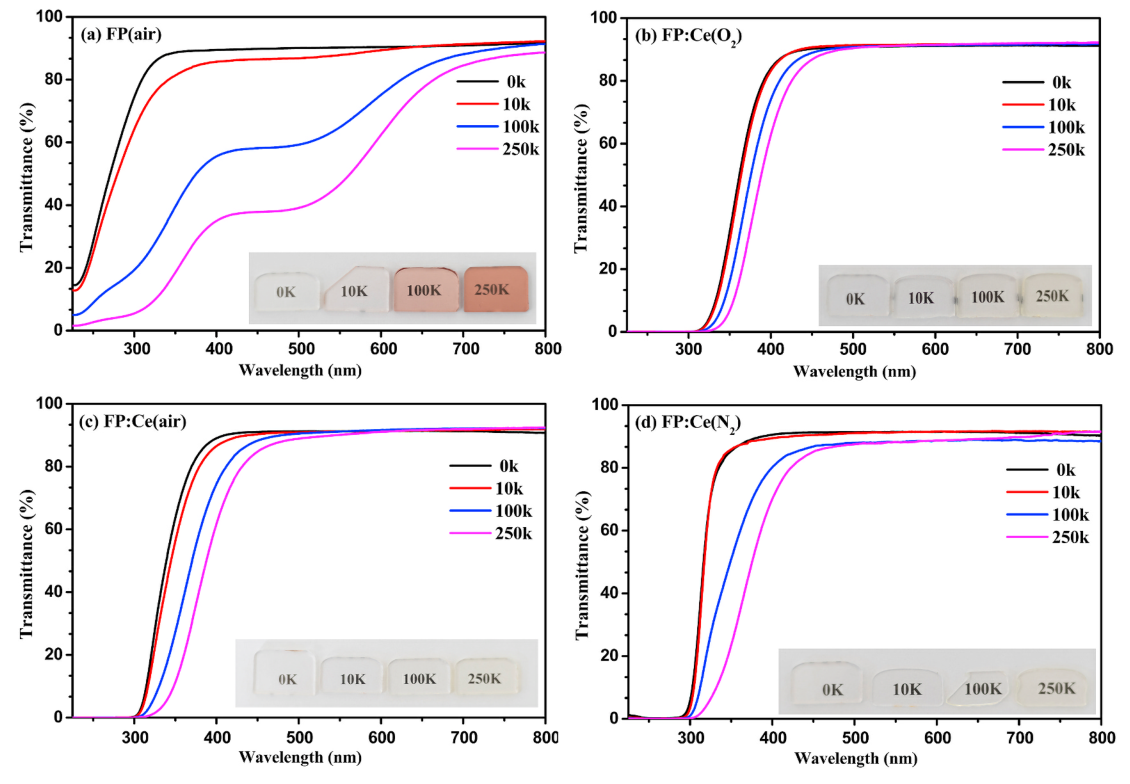High-energy radiation in space and nuclear irradiation environment induces colour centres in optical glass which can render optical systems and optical loads unusable. Radiation-induced damaging effects on optical glass can be reduced by modifying the chemical composition of the glass or adding specific doping ions in the glassy matrix, obtaining so-called radiation-hard glass.
Radiation-hard optical glasses are generally used as windows and lenses in refractive optical systems to improve the radiation resistance of space loads. Cerium-doped fluorophosphate glass shows a good application prospect in this field. The melting atmosphere affects the radiation resistance of glass, but there is a gap in this aspect in fluorophosphate glass.
A research team led by Prof. Dr. WANG Pengfei from Xi'an Institute of Optics and Precision Mechanics (XIOPM) of the Chinese Academy of Sciences (CAS) reveals the effect of melting atmospheres on the optical property of radiation-hard fluorophosphate glass. The result was published in Ceramics International.
According to the researchers, fluorophosphate glasses were prepared under three different atmospheres: nitrogen, oxygen, and ambient air. The different atmospheres' effects on the fluorophosphate glasses' transmission decline, defect formation, and structural changes before and after exposure to gamma radiation were studied using the transmittance, absorption, and electron paramagnetic resonance spectra.

The UV–visible transmission spectra and corresponding photographs of the fluorophosphate glasses before (0 krad (Si)) and after gamma irradiation (10, 100, and 250 krad (Si), respectively): (a) FP (air), (b) FP: Ce(O2), (c) FP: Ce(air), and (d) FP: Ce(N2). (Image by XIOPM)
Researchers found that introducing a small amount of CeO2 (0.34wt%) into the glass converted NBO and BO into ABO in the glass network, red-shifted the UV absorption edge, and decreased the optical density increment by almost half after radiation. As it melted in air, the NBO ratio of the fluorophosphate glass reached the lowest level and the Ce4+ ratio in the glass was 92.49%, which helped suppress the generation of POHC, Fe3+, PO4-EC, and PO3-EC defects during the gamma irradiation process, improving the glass’s radiation resistance.
The results demonstrated that adjusting the relative ratio of Ce3+/Ce4+ and producing structural microdefects in the glass was achieved by optimizing the glass melting atmosphere, which determined the fluorophosphate glasses’ UV absorption edge and radiation resistance. This study is instructive for applying fluorophosphate glass as optics in space irradiation environments.
Download: